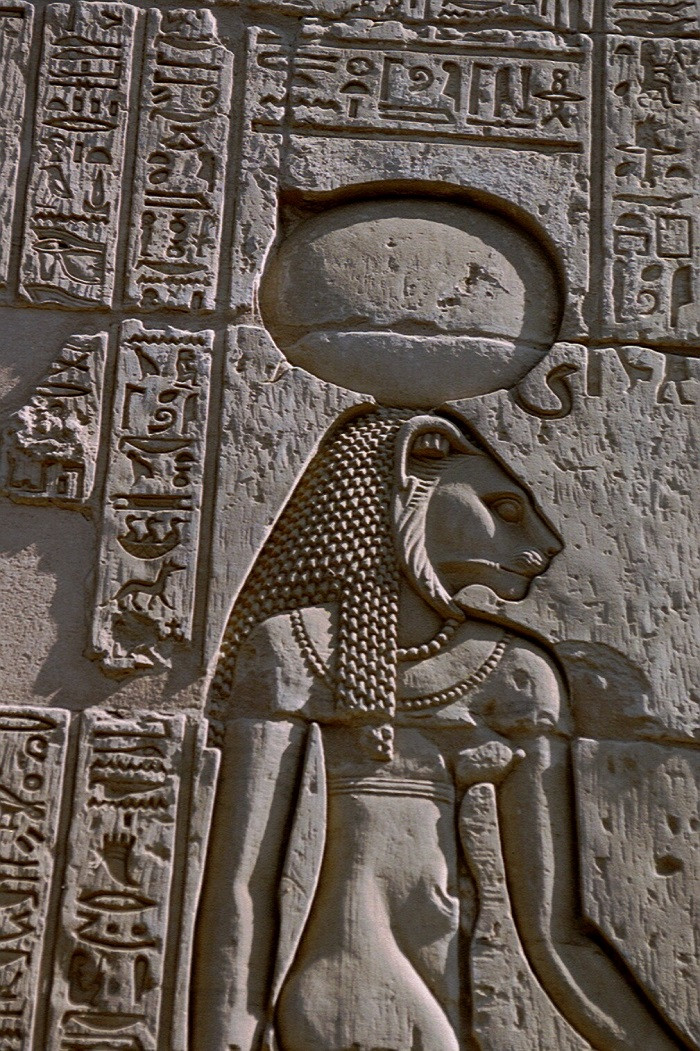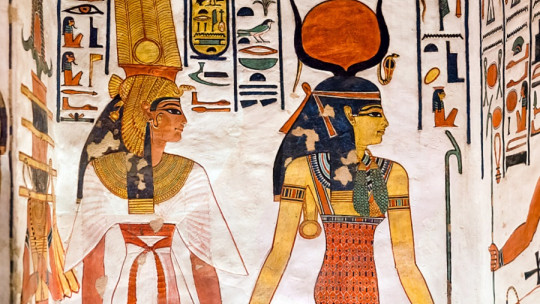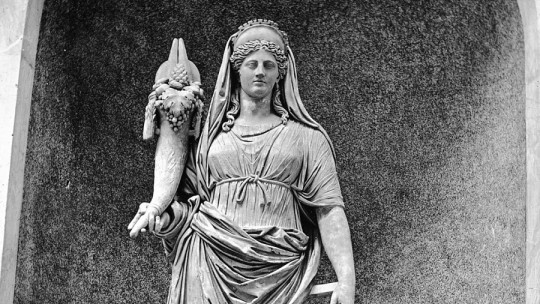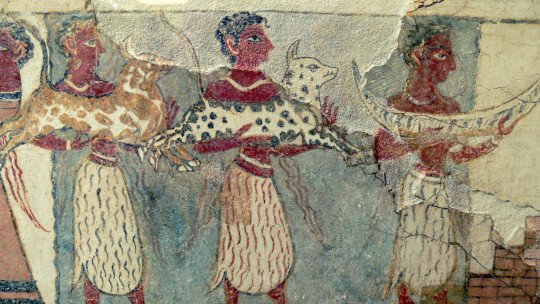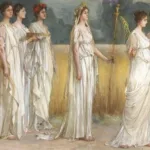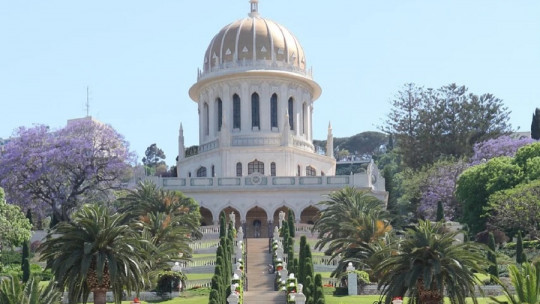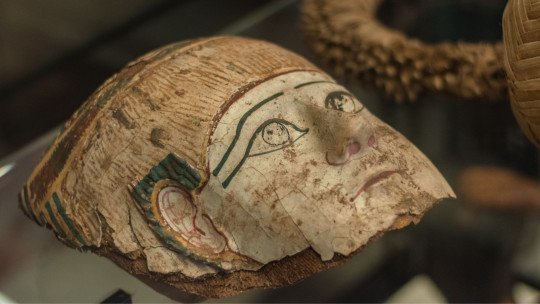In Ancient Egypt women enjoyed certain rights, more than in cultures such as the Greek and later.
This greater appreciation of the female gender was not only evident in the way women were treated, but also its importance in the religious aspect, evidenced by the fact that there were many female deities in the Egyptian pantheon.
In this article we are going to see the main Egyptian goddesses how they were linked to other deities and what their powers and representations were.
The 20 most important Egyptian goddesses
The ancient Egyptians are known for having had an impressive and rich culture, with monumental buildings such as the colossal pyramids and enormous temples. They did not build these buildings just for the sake of it, but to worship the gods and goddesses that made up their extensive pantheon, since the Egyptians were polytheistic, having gods for practically everything.
Egyptian deities mainly represented natural forces and phenomena although some were also patrons of certain groups such as merchants, ranchers or even slaves.
Throughout its history there have been several deities and, to “standardize” the cult, it is believed that After the founding of the Egyptian state around 3100 BC the authority in charge of religion and offerings to the gods was controlled by the pharaoh who claimed to be the representative of the gods.
In Ancient Egypt, women enjoyed certain rights that later cultures did not recognize. Women in Egyptian society were not in a position of inferiority nor did they have to perform roles as strictly linked to gender as in Ancient Greece and later cultures, so it is not surprising that a significant number of deities in the Egyptian pantheon were feminine. And this is what we are going to see next, the main Egyptian goddesses.
1. Amonenet
Amonet was one of the main goddesses of the Egyptian religion, whose name meant “the hidden one.” It was part of the Ogdoad, which was the set of eight Egyptian deities considered primordial, also called souls of Thoth In cities like Thebes she was continually worshiped as the pharaoh’s protector.
This deity was consort of Amun and, in fact, was represented as a female variant of that god. She used to be described as a woman adorned with a “deshret” (red crown) holding a papyrus scroll in her hands.
In all the documents and archaeological remains where this goddess is represented, she always does so in the company of her husband Amun, and there are no references to Amonet alone. What is known is that it was from the twelfth dynasty (1991-1803 BC) that her image took second place, being replaced by Mut as the new consort of Amun.
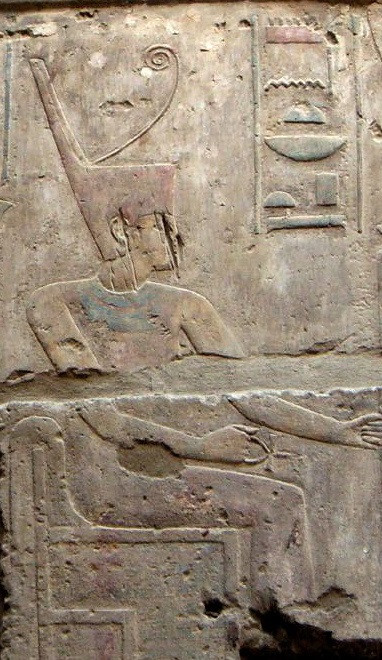
2. Bastet
Bastet was a deity worshiped since the time of the second dynasty, around 2890 BC She was also called Bast and was known as the goddess of war, especially in lower Egypt before the unification of cultures
In the oldest representations of this goddess she was represented as a warrior in the shape of a lion and, later, she was transformed into a protective goddess in the shape of a cat. She was especially worshiped in the city of Bubastis (present-day Zagazig) and in the temples where she was worshiped there was a tradition of mummifying cats. We know this because more than 300,000 feline mummies have been found in temples consecrated to the deity.
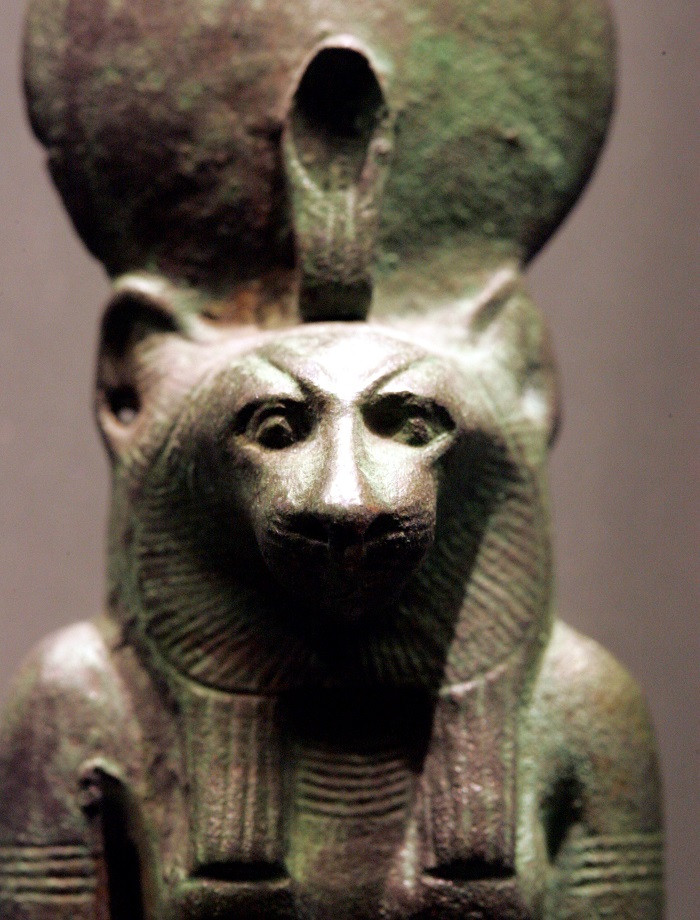
3. Anuket
In Egyptian mythology, Anuket was the personification of the Nile River, also acting as the goddess who owned it. She was also called Anaka or Anqet, whose name means “the hugger” and her sacred animal was the gazelle.
She used to be represented as a woman with a headdress made of reeds or ostrich feathers and with a scepter in her hand She was also represented breastfeeding the pharaoh and, in later periods of Egyptian civilization, she was recognized as the goddess of lust, which is why she was associated with a cowrie (Monetaria moneta) due to its shape similar to that of a vagina.
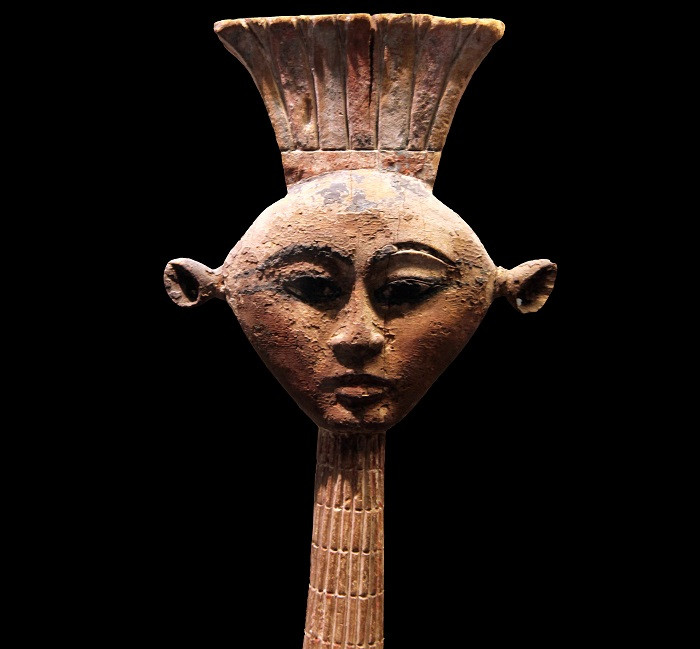
4. Wadjet
Wadjet was a local goddess of the city of Dep. This deity was worshiped as the patron and protector of lower Egypt and, later, also as the protector of all deities in upper Egypt. It represented the emblem on the crown of the governors of lower Egypt She was associated with the earth and she was often represented as both a woman with a head and a snake herself.
This divinity was represented around a solar disk taking the form of urea. The urea or uraeus was a small ornament in the shape of a stylized cobra very common in Egyptian masks and crowns, which we can say that Wadjet was a very common deity that appeared in the company of other Egyptian gods and goddesses.
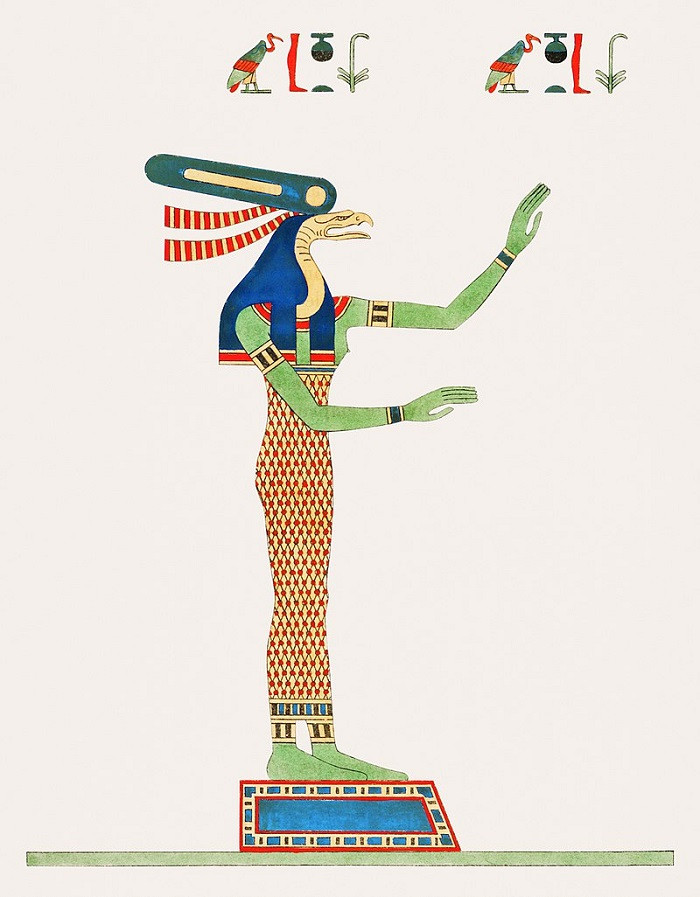
5. Hemsut
The Hemsut were the goddesses of destiny and protection according to Egyptian mythology These deities were closely related to the idea of “ka”, an Egyptian word to refer to something like the spirit and, in fact, they were described as the female personification or counterpart of the male ka.
They were also described as the primeval waters, that liquid from which all things were born, and were usually represented carrying a shield with two arrows crossed over it, or that of a woman on her knees holding a child in her arms.
6. Hathor
Hathor was the deity who personified feminine love, joy and motherhood She was one of the most important and revered goddesses throughout the history of Ancient Egypt, being worshiped by both the Egyptian aristocracy and commoners alike. She was normally represented as a cow goddess, with horns between which was a solar disk surrounded by a urea.
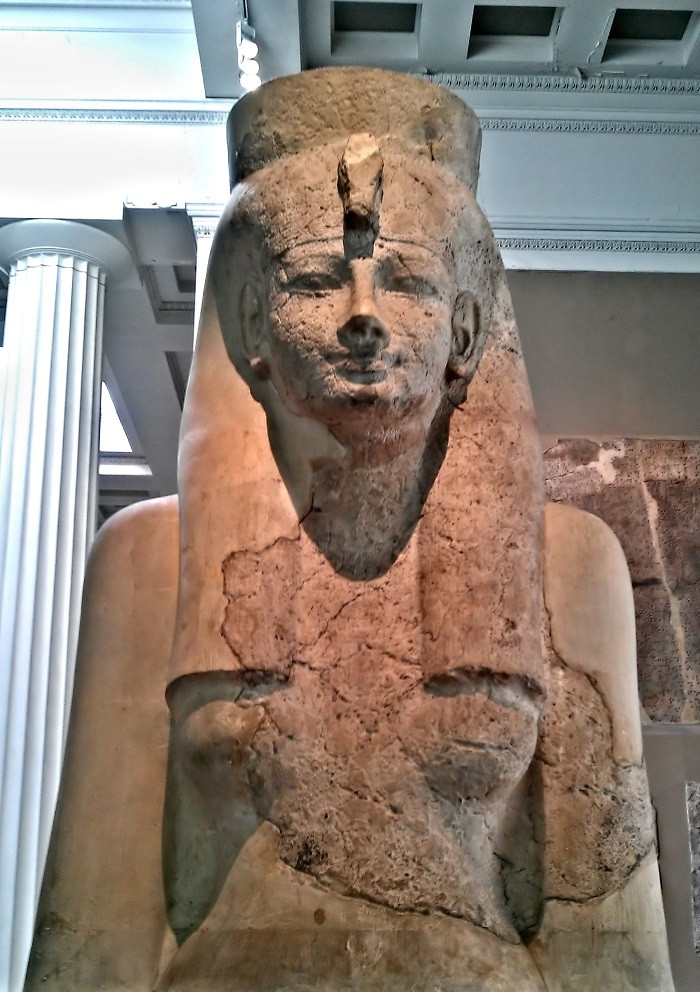
7. Hatmehyt
Hatmehyt or Hatmehit was the goddess of fish in the Mendes area, whose name can be translated as “chief of the fish” or “leader of the fish.” Given her relationship with these aquatic animals, she was usually represented as a fish and also as a woman with an emblem or crown in the shape of that animal.
As the centuries passed and Egyptian culture became more sophisticated and complex, Hatmehyt was considered the wife of Osiris and mother of Horus also becoming related as an alternative form of the goddess Isis.
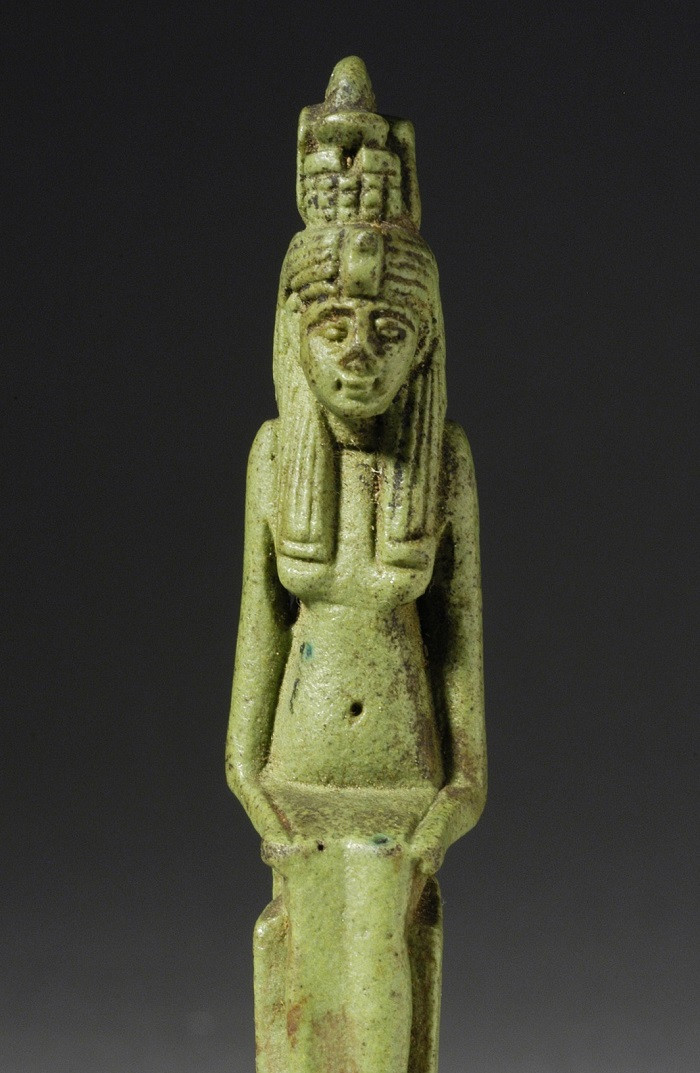
8. Iusaaset
Iusaaset, Iusaas or Saosis are the names given to one of the primordial goddesses of the Egyptian religion, considered the grandmother of all deities
This Egyptian goddess was represented as a woman wearing a vulture crown, with horns and with a solar disk surrounded by a urea holding a scepter in her hands.
This goddess was related to the acacia tree, considered in Ancient Egyptian mythology as the tree of life. According to Egyptian myth, Iusaaset and Atum were the parents of Shu and Tefnut, considered the first deities.
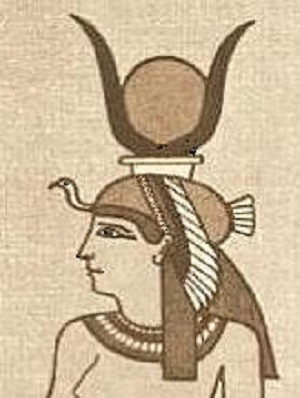
9. Heket
Heket was the Egyptian deity of fertility As the ancient Egyptians considered the toad to be an animal related to fertility, mainly because they appeared with the annual flooding of the Nile River, it was common for the goddess Heket to be represented in the form of this amphibian.
This goddess was considered the female version of Khnemu and was also included in the Egyptian pantheon as his wife in addition to being the mother of Horus and it is believed that some of the toad-shaped statues belonging to the second dynasty They were dedicated to her.
The goddess Heket was also related to the last moments of childbirth, which is why ancient Egyptian women wore amulets in the shape of a toad sitting on a lotus leaf when the woman in labor was about to give birth.
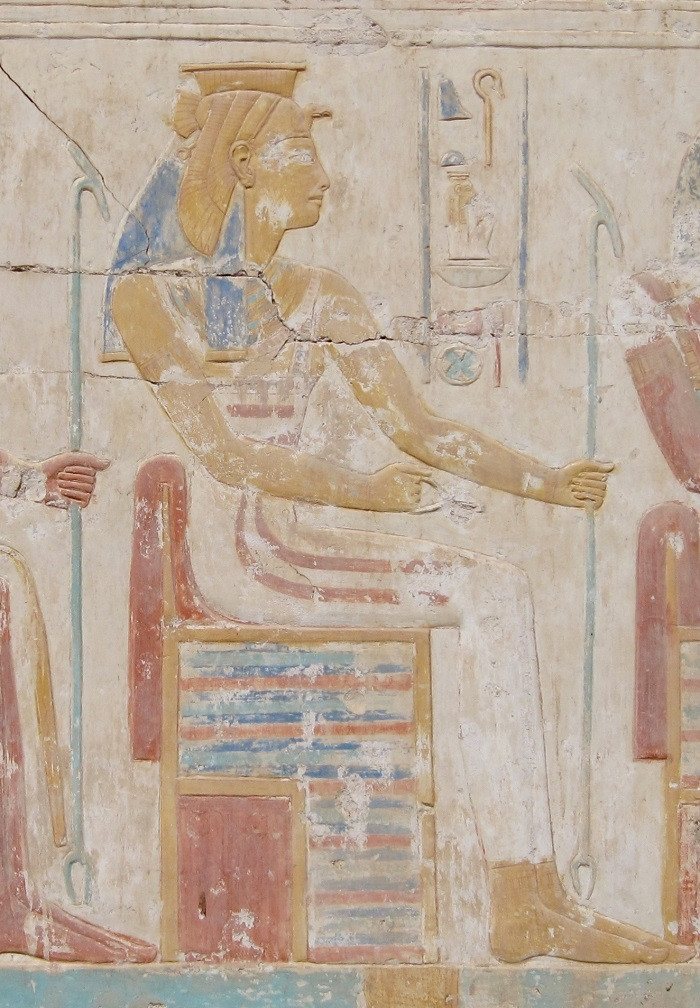
10. Isis
Isis is probably one of the most famous Egyptian deities, and in fact her cult reached abroad, being venerated even in the Roman Empire The rituals to this deity have survived the passage of time and, as with the Zoroastrian religion, today there are many movements and religions that worship him.
Isis was originally described as the ideal mother and wife, as well as the mother of nature and goddess of magic. She was also worshiped as the patron saint of slaves, fishermen, artisans and the oppressed and it was considered that she had a close relationship with political power, which is why aristocrats and leaders worshiped her. She was also the protector of the dead and the goddess of children.
Her name means “throne”, something that is evidenced by the way she was represented Isis wore a crown that had a small throne on top of it, representing political power, especially being the personification of the power of the pharaoh. The most important temples of this deity were mainly in Behbeit El-Hagar and on the island of Philae.
In Egyptian mythology, Isis was the first daughter of Kebab (Greek god Geb), god of the Earth, and Nut, goddess of the Sky. Isis married her brother Osiris and conceived Horus with him, according to part of Egyptian myth. It is believed that it is the sacred image of Isis with Horus that Christianity took to represent the Virgin Mary with Jesus in her arms.
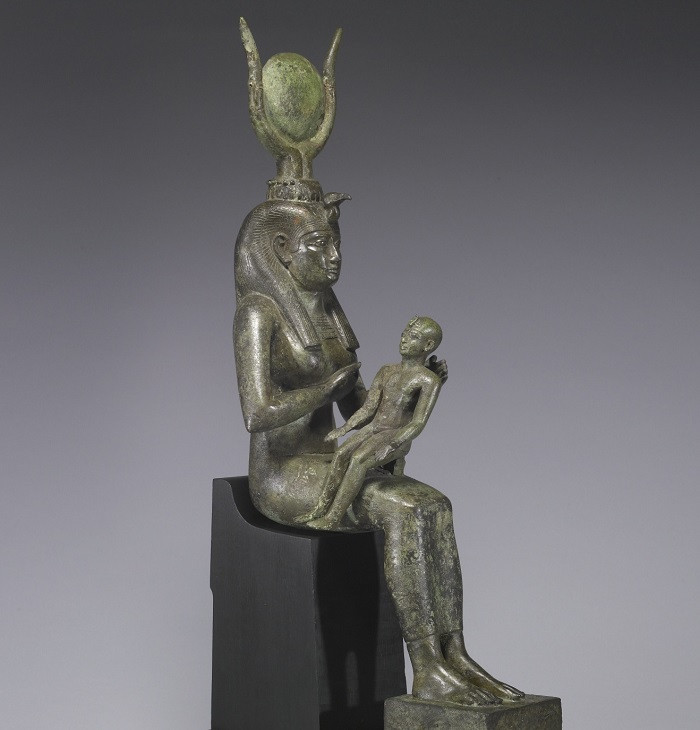
11. Qebehut
Qebehut or Kebechet is a curious goddess, since in the mythology of the Egyptians she is was the deity considered the personification of embalming fluid , a fundamental substance for the civilization known worldwide for its very well preserved mummies. In the classical Egyptian language its name means “refreshing water.”
In mythology, Qebehut was considered the daughter of Anubis and his wife Anput, representing her as a serpent that cools and purifies the pharaoh. It was believed that this goddess offered water to the spirits of the deceased while they waited for the mummification to be completed. In addition, she had the mission of protecting the body, keeping it cool.
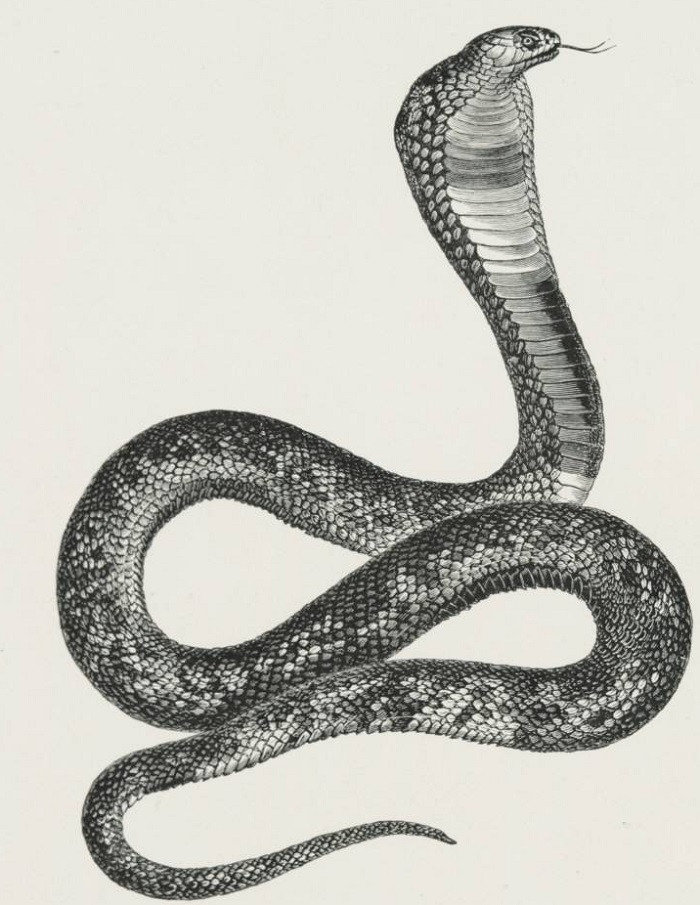
12. Mut
Mut’s name can be translated as “mother”, which suggests what the role of this deity was. She was considered a primordial goddess, associated with the waters from which all things emerged
Its hieroglyph had the image of a vulture, an animal which the Egyptians saw as a rather maternal creature, although it may surprise us in modern times. Artistically, the goddess Mut was represented as a woman with the wings of that bird, with an “ankh” (Egyptian cross) in her hands and wearing a red or blue dress.
On his head he wore the crown of unified Upper and Lower Egypt , making him a deity with a certain political significance. She was also represented as a cat, a cow, a lioness and a cobra.
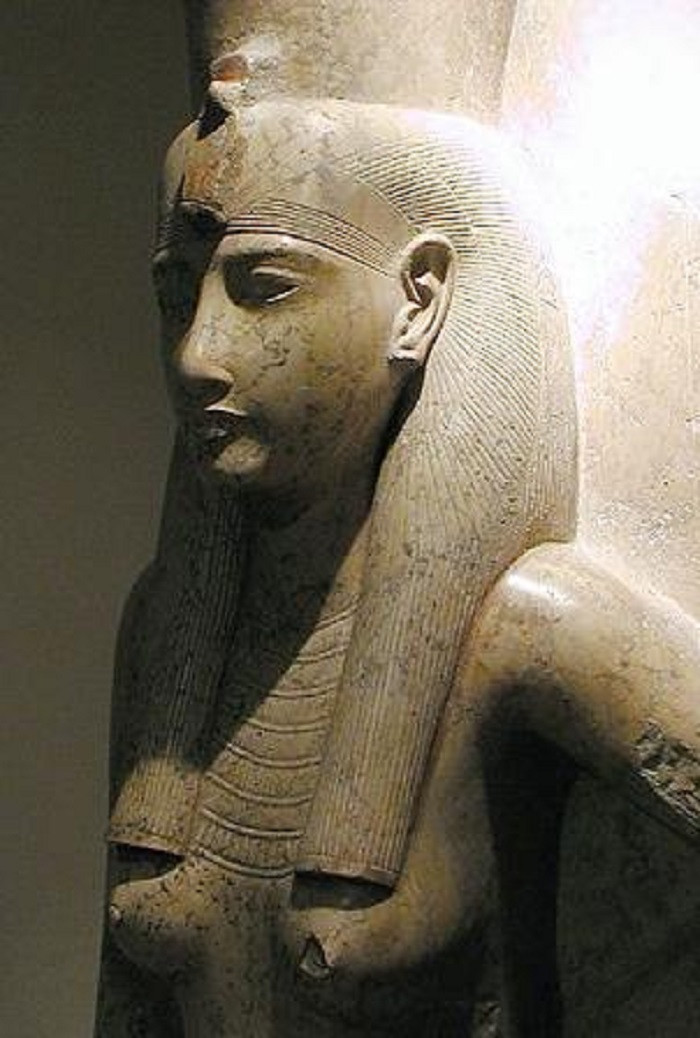
13. Maat
Maat or Ma’at was the deity who personified truth, order, law, justice and balance. This deity It had the task of regulating the stars and the seasons and was the one that established order in the universe from the most absolute chaos to the moment of creation.
Their main mission towards mortals was to weigh the souls or hearts of the deceased who arrived in the underworld, determining whether or not they should reach paradise. In the graphic representation of her this goddess was drawn with a pen on her head, the same one she used to see who was worthy of receiving a pleasant eternal life.
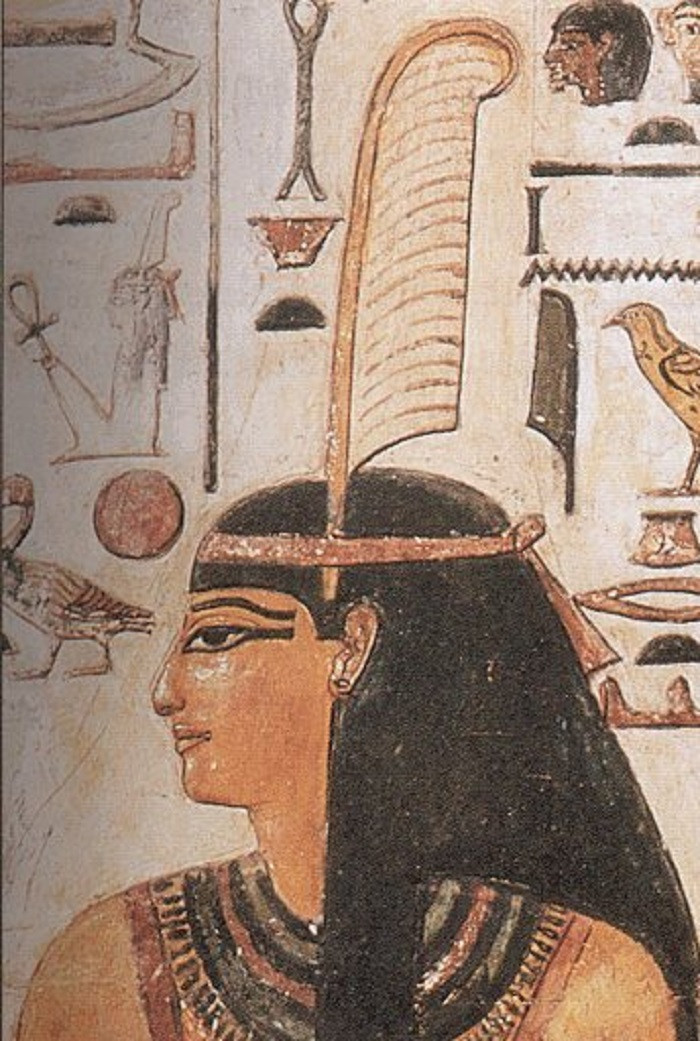
14. Mafdet
Mafdet was a very Egyptian goddess in the sense that her main mission was to protect people from attacks by snakes and scorpions, animals that were very common in the arid lands of classical Egypt.
It is believed that it was already worshiped in the times of the first dynasty and was usually represented in the shape of some feline or mongoose the latter animal being well known for being immune to snake venom.
The goddess Mafdet was also a symbol of legal justice or the death sentence, and protected the tombs of the pharaohs and other sacred places. According to legend, this goddess ripped out the hearts of those who did evil and gave them to the pharaoh.
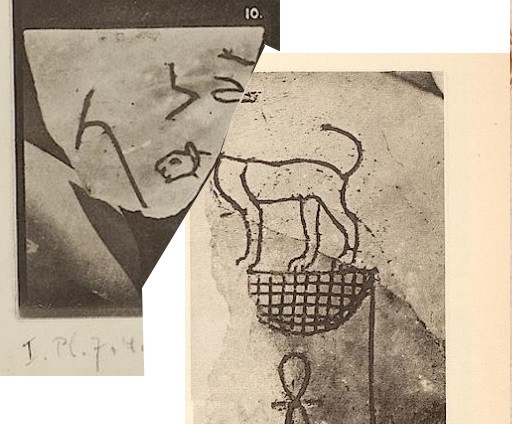
15. Meheturet
Meheturet, Mehurt, Mehetweret or Methyer was the goddess of the sky. Her name can be translated as “great flood” and she was represented as a cow with a solar disk between its horns which is why it is also known as the “heavenly cow” or “cow goddess.”
In the Egyptian creation myth, Meheturet gave light to the sun at the beginning of time and is considered one of the main people involved in the creation and maintenance of life. She was also considered the goddess of water, creation and rebirth, responsible for raising the sun in the sky every morning, providing light and heat to the crops of those who worshiped her.
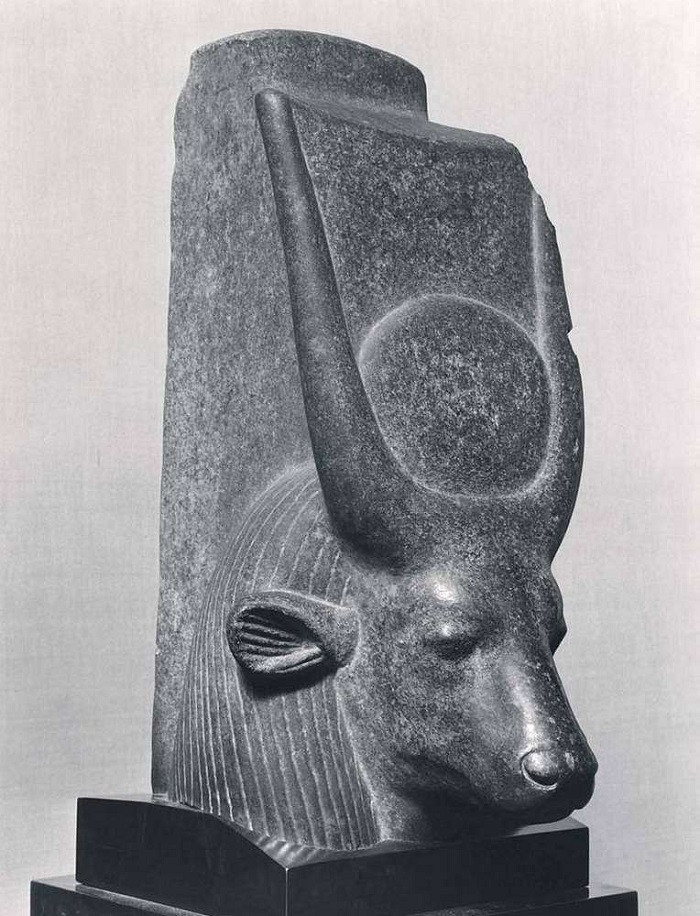
16. Seshat
seshat She was the Egyptian deity of wisdom, knowledge and writing, seen as a scribe whose name was, in fact, “she who writes.” It is this goddess who is credited with having invented writing according to the mythology of Ancient Egypt and had a role similar to that of Athena in Greek religion, being associated with disciplines such as history, astronomy, astrology, mathematics, construction and architecture.
Among their tasks was to protect the scrolls, since these were a source and storehouse of valuable knowledge, knowledge that the ancient Egyptians valued highly and were what made them a prosperous and powerful civilization. The main temple of Seshat was located in the city of Heliopolis.
Its representation used to be that of a woman with a seven-pointed emblem on her head , topped with a bow and two feathers or two horns pointing downwards. In her hands she had a scribal palette and a writing reed or pen, a small tadpole and a palm leaf. She was dressed in a leopard skin.
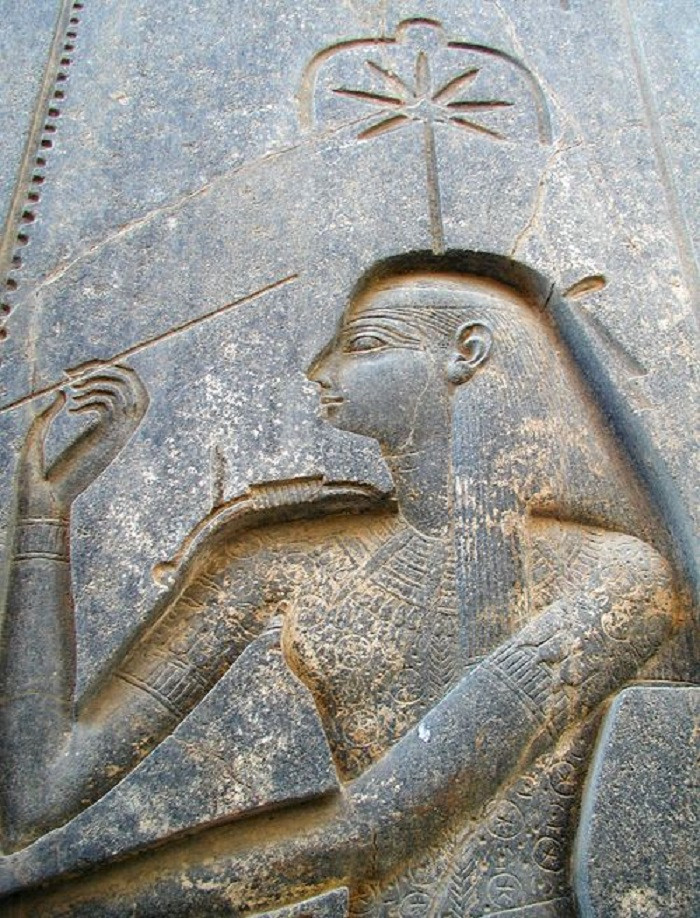
17. Nephthys
Nephthys or Nebthet was an Egyptian goddess who was part of the great Pesedyet (in Greek culture Ennead) of Iunu (Heliopolis in the Greco-Latin world). The Pesedyet was the set of gods that formed the cosmogony of Heliopolis, composed of the gods Atum, Shu, Tefnut, Nut, Geb, Isis, Osiris, Nephthys and Seth.
Nephthys was the daughter of Nut and Kebab and sister of Isis, and was a protective deity who symbolized the experience of death as opposed to her sister, who symbolized the experience of life. She was sometimes described as aggressive, capable of reducing any enemy of the pharaoh to ashes with her vivid, incandescent fire breath.
This goddess was usually represented as a woman with falcon wings, and among her functions there were some similar to those of Isis If Isis balanced the light, Nephthys balanced the darkness, which is why it was common for these two goddesses to be represented as twin sisters.
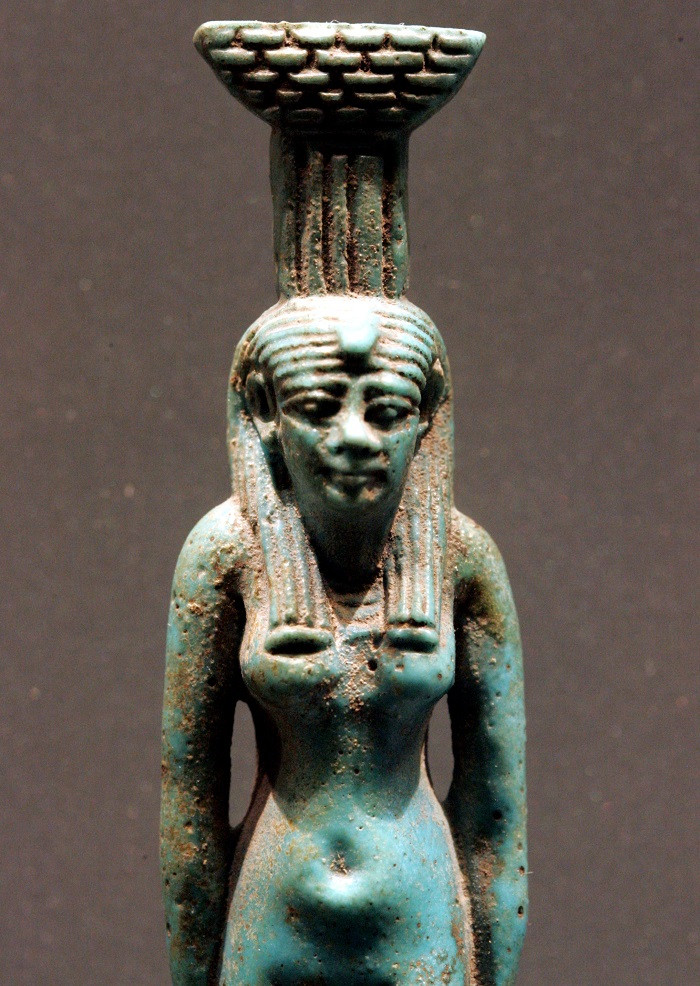
18. Tueris
Tueris was a protective goddess, representing childbirth and fertility. Her name means “the big one” and she used to be represented in the form of a female hippopotamus on two legs with large hanging breasts with some feline features and a Nile crocodile tail.
This deity was the one who shaped amulets that were used to protect mothers and their children from any harm and, it was also common for his image to be used to decorate everyday objects, such as chairs or vessels.
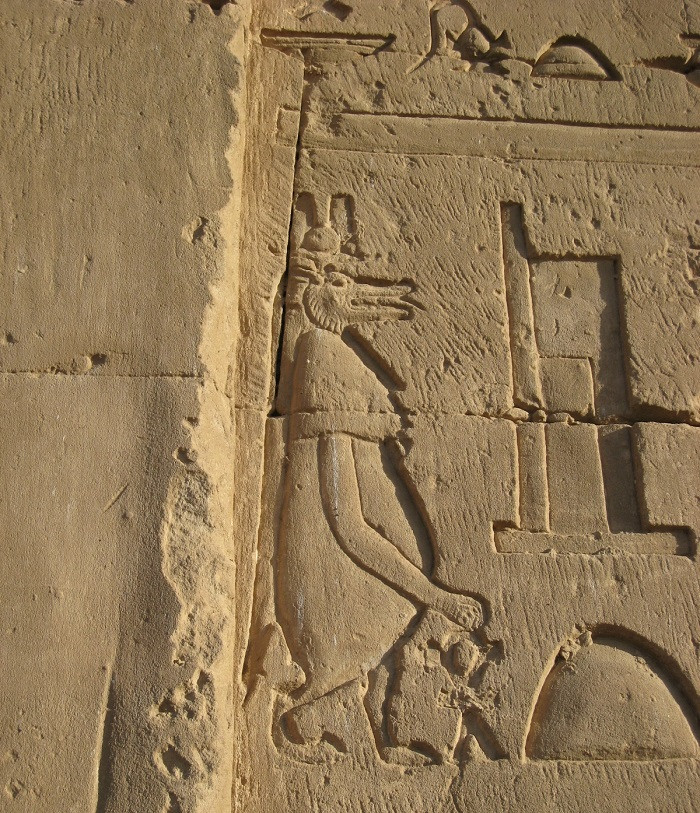
19. Tefnut
Tefnut was the goddess of humidity, damp breeze, dew and rain She was the sister and wife of the god Shu, god of air, and the mother of Geb and Nut. She was represented either as a full woman or as a woman with the head of a lioness, wearing a wig and a solar disk wrapped in an urea snake.
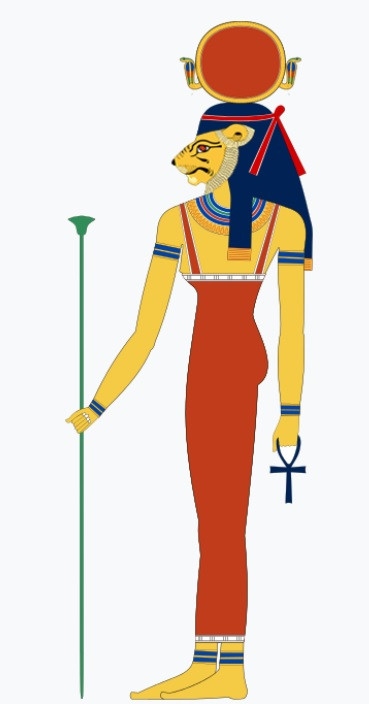
20. Sekhmet
The name Sekhmet comes to mean “the powerful one,” and she was a warrior goddess who was also associated with the power of healing in Ancient Egyptian mythology. She was represented as a lioness, being known by the Egyptians as the goddess who hunted best of all
According to legends, this deity had formed the desert using his breath and protected the pharaohs, serving as their guide in times of war. As for the graphic representation, Sekhmet was represented carrying on her head a sunny disk surrounded by a urea.
